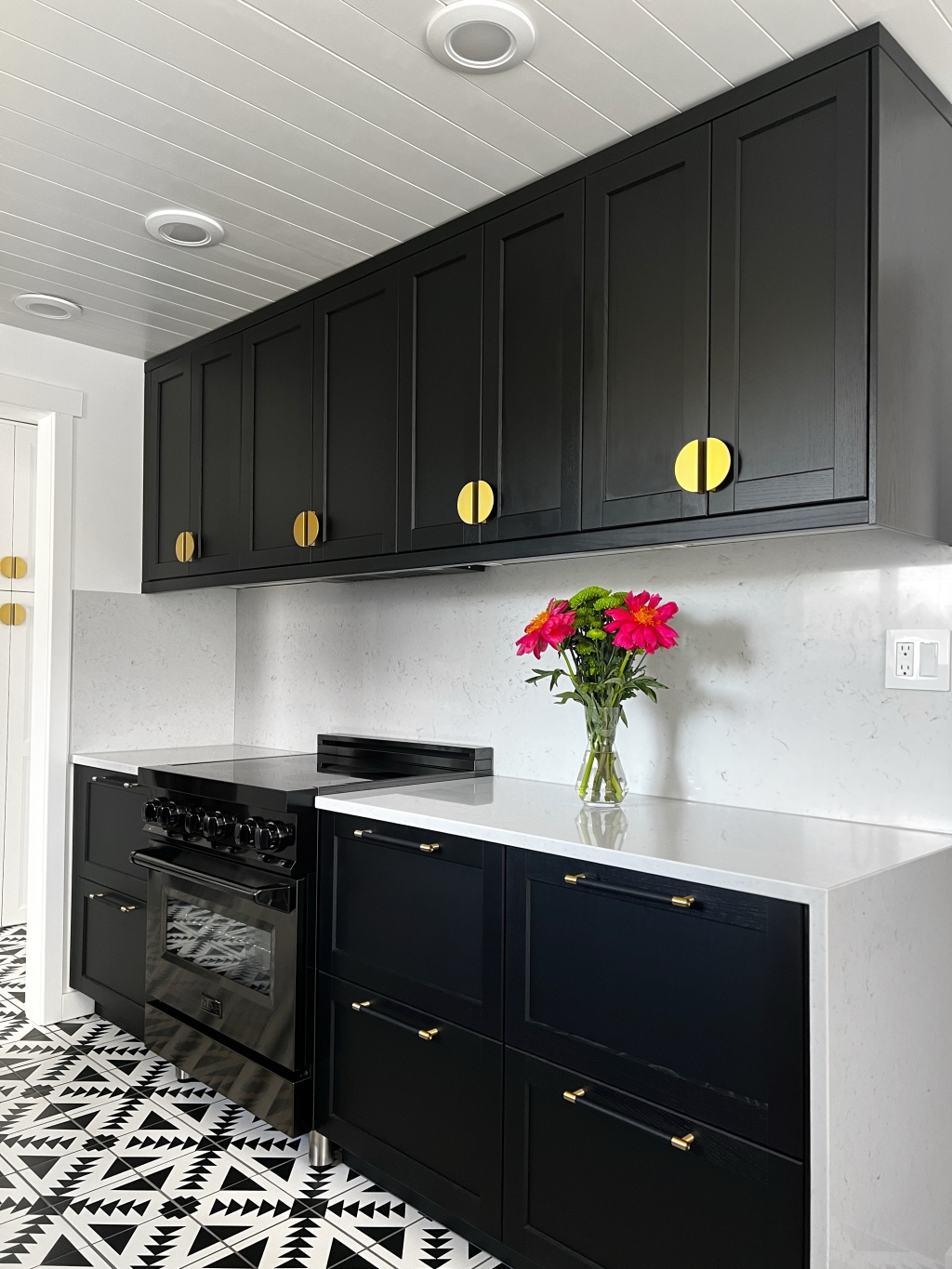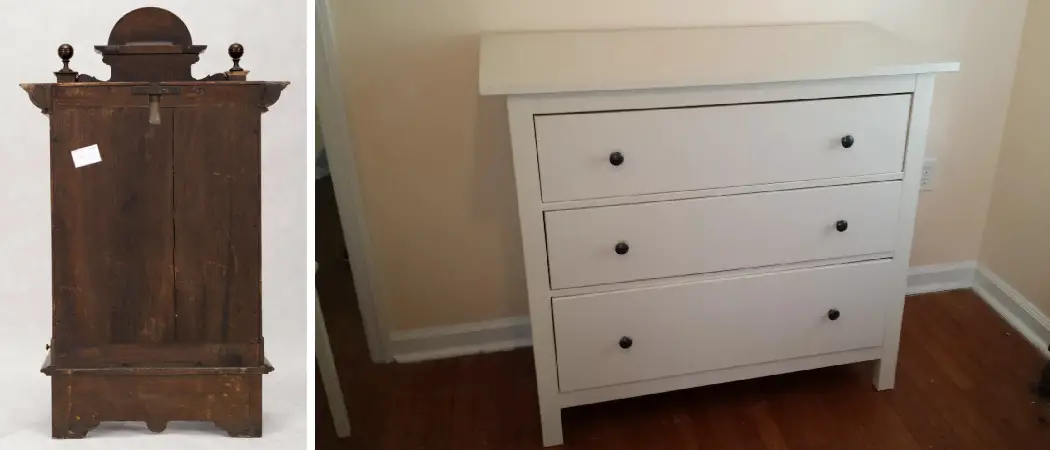To fix collapsed drawers, first remove the drawers, assess damage, straighten or replace damaged parts, and reassemble. Collapsed drawers are a common household issue, often caused by overloading or damaged sliders.
By following simple steps, one can easily restore functionality to drawers, prolonging their lifespan and saving money on replacements. Taking immediate action to address collapsed drawers can prevent further damage to the furniture and ensure smooth everyday use. It is essential to correctly diagnose the problem and apply the appropriate fix to ensure a durable and long-lasting solution.
With a few tools and some know-how, fixing collapsed drawers can be a simple DIY project that enhances the usability of furniture.

Common Causes Of Collapsed Drawers
Collapsed drawers can be quite frustrating, but understanding the common causes can help prevent this issue. By identifying the root problems, you can effectively remedy the situation and prolong the lifespan of your drawers.
Overloading The Drawer
Overloading drawers is a common cause of their collapse. When drawers are filled beyond their capacity, the extra weight can cause the bottom panel to buckle or the drawer slides to break. It’s important to distribute weight evenly and avoid storing excessive heavy items in a single drawer.
Poorly Constructed Drawer Slides
Drawer slides that are poorly constructed or worn out can lead to drawer collapse. Faulty slides diminish the support and structural integrity of drawers. To prevent this, regularly inspect the condition of drawer slides and replace them if signs of wear or damage are apparent.
Assessing The Damage
Before diving into fixing collapsed drawers, it is crucial to assess the extent of damage to understand the underlying issues. Proper evaluation helps in determining the right solutions for efficient repairs.
Examining The Drawer Structure
Start by examining the overall structure of the drawer. Look for any visible cracks, splits, or warping in the wood. Ensure all connections are intact to provide stability to the drawer.
Checking The Drawer Slides
Inspect the drawer slides to identify any signs of wear and tear. Make sure the slides are properly aligned and securely attached to the drawer and the cabinet. Smooth gliding of the drawer is essential for its functionality.
Quick Fixes For Collapsed Drawers
If you have a collapsed drawer, there’s no need to worry or replace the entire unit. With a few quick fixes, you can restore your drawer’s functionality and save yourself time and money. Below, we’ll explore two simple methods to fix collapsed drawers: reinforcing the drawer bottom and adjusting the drawer slides.
Reinforcing The Drawer Bottom
If your drawer has collapsed due to a weak bottom, reinforcing it can provide the necessary support to hold your items without further issues. Here’s how to reinforce the drawer bottom:
- Remove the drawer from the cabinet or dresser.
- Inspect the condition of the existing bottom. If it’s damaged or excessively worn, it’s best to replace it with a new piece of plywood or MDF board with the same thickness.
- Measure the dimensions of the drawer bottom accurately.
- Cut the new piece of plywood or MDF board to match the measurements.
- Apply wood glue along the edges of the new bottom piece.
- Place the glued side firmly onto the existing bottom, making sure it fits snugly.
- Secure the new bottom with nails or screws, ensuring they don’t protrude and interfere with the smooth sliding of the drawer.
- Allow the glue to dry completely before reinserting the drawer into the cabinet or dresser.
Adjusting The Drawer Slides
If the collapsed drawer is caused by misaligned or damaged drawer slides, adjusting them can restore the smooth sliding motion. Follow these steps to adjust your drawer slides:
- Remove the drawer from the cabinet or dresser.
- Inspect the condition of the drawer slides. If they’re damaged, consider replacing them with new ones.
- Clean the drawer slides and remove any debris or buildup that may affect their functionality.
- Check the alignment of the slides. They should be parallel and properly attached to both the cabinet/dresser and the drawer itself.
- If needed, loosen the screws holding the slides to the cabinet/dresser and make necessary adjustments to align them correctly.
- Ensure the slides are level and mounted securely.
- Reinsert the drawer into the cabinet or dresser and test its sliding motion. If it’s still not smooth, further adjustments might be needed.

Preventive Maintenance Tips
Preventive maintenance is key to keeping your drawers in good shape and preventing them from collapsing. By following these simple preventive maintenance tips, you can ensure that your drawers remain sturdy and functional for years to come.
Organizing Drawer Contents
Properly organizing the contents of your drawers not only helps to keep them neat and tidy but also prevents overloading, which can lead to the collapse of the drawer. Create sections within the drawer using dividers or small baskets to keep items separated and prevent them from shifting and causing stress on the drawer structure.
Regular Inspection And Maintenance
Regularly inspecting your drawers for any signs of wear and tear can help you address potential issues before they lead to a collapse. Look for loose screws, damaged tracks, or any visible damage to the drawer components. Tighten loose screws, lubricate drawer slides, and replace damaged parts to ensure the longevity of your drawers.

Frequently Asked Questions Of How To Fix Collapsed Drawers
How Do You Fix A Drawer That Fell Down?
To fix a fallen drawer, remove the drawer and inspect the tracks for damage. Tighten any loose screws and realign the tracks if necessary. If the tracks are damaged, replace them. Test the drawer to ensure it slides smoothly before reattaching it.
How Do I Stop My Drawers From Collapsing?
To stop drawers from collapsing, reinforce the bottom with additional support or install drawer slides for stability.
How Do You Fix The Base Of A Drawer?
To fix the base of a drawer, follow these steps: 1. Remove the drawer from its frame. 2. Inspect the base for any cracks or damage. 3. If the base is loose, tighten or replace the screws. 4. If there are cracks, apply wood glue and clamp the base together.
5. Let the glue dry before reattaching the drawer to the frame.
How Do You Get A Drawer Back On Its Track?
To get a drawer back on its track, first, remove any items in the drawer. Then, pull the drawer out fully and lift it slightly to clear the track. Inspect the track for any obstructions or damage. If needed, use a lubricant like silicone spray.
Finally, align the drawer on the track and push it back in gently.
Conclusion
Having collapsing drawers can be frustrating, but with these easy DIY fixes, you can restore functionality effortlessly. From using epoxy adhesive to reinforcing the structure, each method can prolong the life of your drawers. Don’t let a minor issue derail your organization – tackle it head-on!

